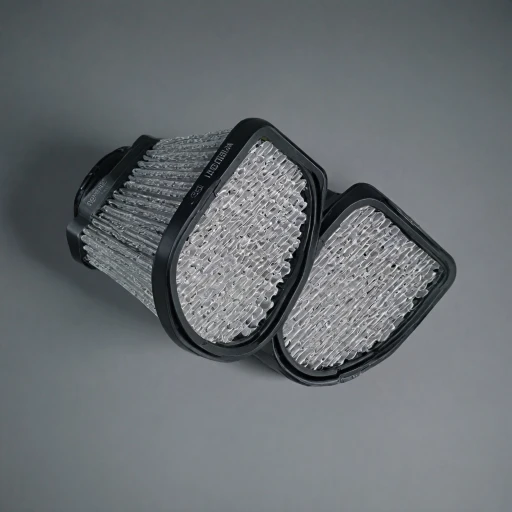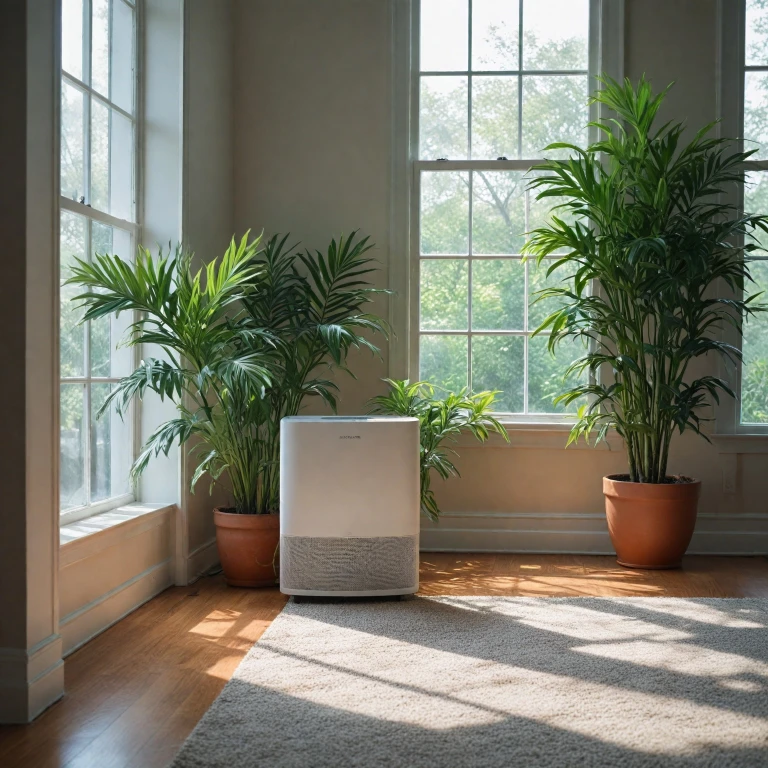Understanding VOCs and Their Impact on Health
What are VOCs and Why Do They Matter?
Volatile Organic Compounds (VOCs) are a large group of carbon-based chemicals that easily evaporate into the air at room temperatures. These microscopic substances are found in many household products, such as paints, cleaning supplies, pesticides, and even personal care products. Their widespread presence in everyday items makes VOCs a common concern for indoor air quality.
Health Impacts of VOCs
Exposure to VOCs can cause a range of health problems, depending on the level and length of exposure. Short-term exposure may lead to discomfort like headaches, dizziness, and irritation of the eyes, nose, and throat. Long-term exposure can result in more severe effects, including liver and kidney damage, central nervous system issues, and an increased risk of cancer. One notorious VOC, formaldehyde, has been classified as a human carcinogen.
Beyond the Basics: Control and Prevention
Finding the best air purifiers designed to target VOCs is crucial for maintaining healthy air quality indoors. A well-chosen air purifier specifically designed for removing VOCs can significantly enhance air quality, alongside other strategies for maintaining clean air. For those looking into alternative solutions, exploring articles such as
choosing the right air purifier for cannabis odor control offer insights into different specialized uses of air filtration technology.
Conclusion
Understanding VOCs' impact on health is essential in deciding on the right air purifiers that suit your needs. While VOCs are part of everyday life, effective methods exist to mitigate their presence, starting with selecting the appropriate air purification technology for your space.
Key Features to Look for in an Air Purifier for VOCs
Essential Features to Combat VOCs Effectively
When seeking the ideal air purifier for removing VOCs, it is crucial to consider a range of key features that elevate its effectiveness against these harmful organic compounds. Understanding these aspects will guide you in making the best choice for ensuring high indoor air quality.
HEPA and True HEPA Filters
While HEPA (High Efficiency Particulate Air) filters are renowned for trapping particulate matter like dust and allergens, VOCs require more specialized filtration techniques. Nevertheless, a true HEPA filter is an important component as it ensures clean air free from particles that can accompany VOCs.
Activated Carbon Filters
The real workhorses in VOC filtration are activated carbon filters. They are specifically designed to absorb gases and volatile organic compounds effectively. An air purifier equipped with a substantial amount of activated carbon will more effectively remove VOCs such as formaldehyde and smoke. These factors contribute to a cleaner, safer air environment.
Filtration Technology
Look for air purifiers that integrate advanced technologies tailored for VOC removal. Technologies like air purifier air pro systems often maximize the efficiency of air purifiers. It's also worth comparing different filtration technologies that combine activated carbon with other volatile organic treatments.
Adjustable Fan Speed and Noise Level
Air purifiers with adjustable fan speeds can enhance their performance based on the room’s conditions. The best products allow you to modify the settings to optimize filtration without increasing noise levels too much. Noise-sensitive individuals will appreciate purifiers that maintain efficiency at a low noise level.
Room Size and Capacity
Ensure the air purifier is suitable for the room’s size. Larger spaces may require a more powerful air purifier like the Austin Air HealthMate, known for tackling VOCs in expansive areas while maintaining superior air quality.
Price and Quality
While price is always a consideration, it is important not to compromise on quality. Some products might have a higher price tag due to specialized filters and superior technology like the air healthmate. Investing in a high-quality air purifier might yield better long-term benefits in VOC removal.
For more detailed considerations on choosing the right air filtration product, especially for unique odor challenges, explore
choosing the right air purifier and ensure your indoor spaces remain fresh and free of harmful volatile compounds.
Top Air Purifiers for VOC Removal
Navigating the Top Contenders for VOC Elimination
Finding the right air purifier that effectively removes VOCs from your indoor air can be a challenging task. Volatile organic compounds can significantly impact air quality and your health, so choosing a purifier with the best filtration technology is crucial. Here, we'll explore some standout products known for their VOC removal capabilities.
-
Austin Air HealthMate: Renowned for its comprehensive filtration system, this air purifier employs a combination of true HEPA filter and activated carbon filter to tackle a wide range of pollutants, including formaldehyde and other VOCs. With its powerful performance, it’s ideal for larger rooms.
-
Air Pro with True HEPA: Featuring an advanced HEPA filter and high-quality carbon filters, this purifier aims to deliver clean air by efficiently trapping VOCs, dust, and smoke, thanks to its high filtration rate and competitive price.
-
CLS Fill Series: Known for exceptional noise level optimization, this purifier allows you to maintain peace in your living space while effectively capturing volatile organic compounds. It's often lauded for its speed and efficiency in small to medium-sized rooms.
When choosing the right air purifier for your needs, consider the specific VOCs prevalent in your environment, the size of the room, and maintenance aspects like filter replacement. Delving into the
benefits of an air compressor and generator combination can also offer insights into optimizing your indoor air solutions.
Comparing Air Purifier Technologies
Comparing Various Air Purification Technologies for VOC Removal
When hunting for the best air purifier to mitigate the effects of volatile organic compounds, understanding the different types of filtration technologies available can greatly influence your decision. Each technology offers unique benefits for maintaining high indoor air quality.
- HEPA Filters: True HEPA filters excel at capturing particulates, but they are not the most effective when it comes to VOC removal. While many air purifiers boast HEPA filters for trapping dust and allergens, you should look for models that pair HEPA with additional technologies to tackle VOCs.
- Activated Carbon Filters: To effectively remove VOCs like formaldehyde and smoke, purifiers with high-quality activated carbon filters are recommended. Activated carbon filters absorb volatile organic compounds and are suitable for improving air quality in rooms where you're dealing with specific VOC pollutants.
- Combination Technologies: Some purifiers, like Austin Air HealthMate, integrate both HEPA and carbon filtration, providing a robust solution by capturing particles and adsorbing gas-based pollutants. These hybrid products can often offer a higher speed in cleaning the air due to their combination approach.
- Advanced Filtration Systems: Certain high-end models incorporate advanced features such as UV-C light or photocatalytic oxidation for additional purification. These technologies can further aid in breaking down compounds and neutralizing pollutants, complementing traditional filtration methods.
- Ionizer Technology: Ionizers are another option, known for generating charged ions that bond with airborne particles, facilitating their removal. However, this technology can have a varying impact on VOC elimination and may impact noise level preferences.
Choosing the right air purifier depends on the specific VOCs present and personal preferences such as noise level and price considerations. A comprehensive consideration of filtration technologies ensures that you can achieve the best air quality with a purifier tailored to meet your needs.
Maintenance and Longevity of Air Purifiers
Ensuring a Long-Lasting Air Purifier
Maintaining your air purifier for optimum performance and longevity requires careful attention to a few integral factors. Understanding how to care for your machine ensures that it effectively manages VOCs and other pollutants, enhancing indoor air quality consistently.
Firstly, regular replacement of filters is essential. Most air purifiers, including models like the Austin Air HealthMate, utilize a combination of pre-filters, HEPA filters, and activated carbon filters. The pre-filter captures large particles, while the true HEPA filter targets smaller pollutants. It's crucial to follow the manufacturer's guidelines for filter replacement frequency. Often, carbon filters designed to remove VOCs need replacement more frequently than particulate filters due to their specific role in absorbing volatile organic compounds and smoke.
Secondly, monitor the noise level and speed settings. Adjusting the fan speed may influence the efficiency of VOC removal. Operating at higher speeds can improve air circulation in larger rooms, ensuring effective filtration of formaldehyde and other indoor air contaminants. However, be mindful of the noise level, which can affect the comfort of a living space.
Regular cleaning of the unit itself should not be overlooked. Dust and debris can accumulate, potentially hindering the performance of the best air purifiers. Wipe down the exterior surfaces and ensure that air vents are clear to maintain proper airflow.
Investing in high-quality products not only ensures that your space remains free from harmful VOCs but also prolongs the life of your purifier. Prioritize models with robust filtration technology to ensure you benefit from cleaner air.
Finally, follow the manufacturer's instructions diligently for any maintenance activities, which can help prevent issues and extend the lifespan of your air filter system. These steps, along with incorporating additional strategies to boost indoor air purity, guarantee both a safer environment and the most efficient use of your air purifier.
Tips for Improving Indoor Air Quality Beyond Air Purifiers
Enhancing Indoor Air Quality
While selecting the best air purifier is crucial for removing volatile organic compounds (VOCs) and improving air quality, there are additional steps you can take to enhance the environment in your space. Employing these measures can help optimize the effectiveness of your air filtration products and contribute to cleaner air.
- Ventilation: Improve indoor air quality by increasing ventilation in your home. Open windows and doors when weather permits to allow fresh air to circulate and dilute the concentration of VOCs and other contaminants.
- Indoor Plants: Certain houseplants, like spider plants and peace lilies, can absorb VOCs and contribute to clean air. While not as effective as a true HEPA filter or an activated carbon filter, they are a natural methods to augment indoor air quality.
- Temperature and Humidity Control: VOCs, including formaldehyde, are known to off-gas more at higher temperatures and humidity levels. Keep your home at a moderate temperature and appropriate humidity levels to minimize VOC emissions. This approach works hand-in-hand with the capabilities of HEPA and carbon filters.
- Source Control: Identify and minimize the use of products that emit VOCs. Opt for low-VOC paints and cleaning products, and ensure proper ventilation when using such items. This step helps in reducing the load on your air purifier’s VOC filtration system.
- Regular Cleaning: Regularly dust and vacuum with a high-efficiency particulate air (HEPA) filter vacuum cleaner to reduce particulate matter and alleviate the burden on your air purifiers. This helps maintain the overall quality of your indoor air.
Implementing these strategies can significantly reduce the levels of VOCs and other pollutants in your rooms, thus enhancing the quality of the air you breathe. By combining the right air purifier with these practices, you can create a more comfortable and healthier indoor environment for you and your family.

